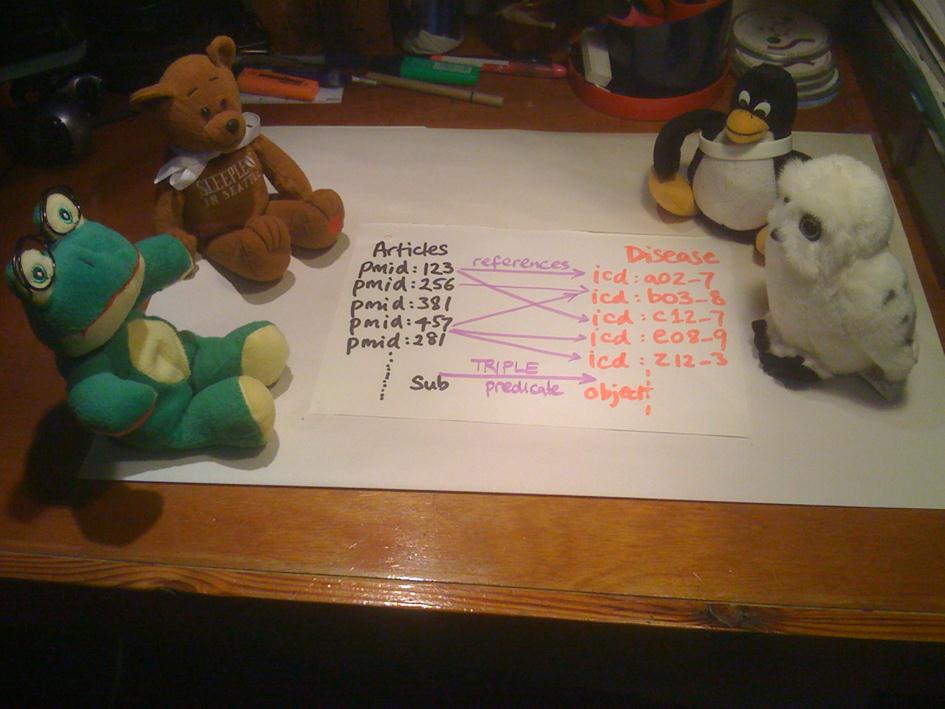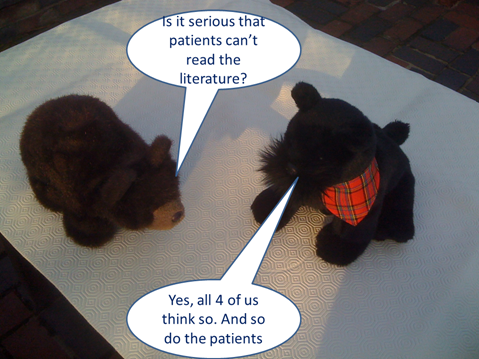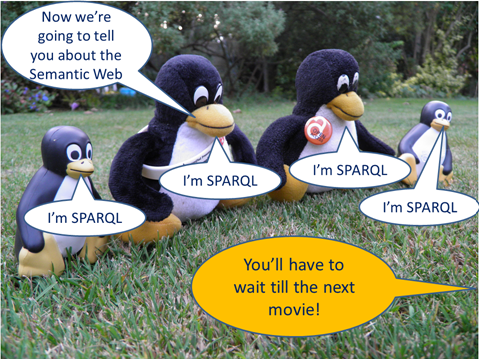Writing this blog is sometimes boring because I have to cover the same matter time and again. That’s unfortunately because progress – in Open knowledge – is so excruciatingly slow in the scholarly community that what I wrote five years ago still holds true. [By contrast the UK, European, and many other governments are making huge and rapid progress and if we, in academia and scholpub don’t take immediate notice we’ll be in trouble. Because this community/market has very little to be proud of.
A week ago I criticised the Royal Society of Chemistry (/pmr/2011/11/29/scientists-should-never-use-cc-nc-this-explains-why/) on the basis of their use of Non-Commercial licences and my intimation of their motives. I was taken to task for inaccuracies (/pmr/2011/11/29/scientists-should-never-use-cc-nc-this-explains-why/#comment-101071 ) (I hold my hand up and admit I got some details wrong); and for misinterpreting their motives. I may well have misrepresented them, but since I am not aware of major policy statements from RSC on Open Access, Licensing of Content, and their reaction to the Hargreaves report on intellectual property and copyright I have to make my own judgments.
Richard Kidd of the RSC has stated:
” [PMR has made] wholly incorrect inferences about our motivations, both in the specifics of the project and the wider motivations of the society”
And
“I’ll write more about my position on NC elsewhere – I fear its removal will make less data available to the public, rather than more – but just to note again for the devoted reader, its use was not for the reasons Peter ascribed in the blog post.”
[NOTE: I started writing about NC licences and what I believe to be shortchanging the authorSide. As the blog post progressed I find I was having to analyse the price of hybrid publishing. This is a separate issue (so I have two issues to explore with the RSC- both of which are compounded by their complete failure to tell us what and why they are doing.]
The point at issue is the general hybrid policy of the RSC and other STM publishers. Many funders require Open Access publication and almost all publishers have responded by creating an option where the author pays (a significant amount of) money and the resulting “article” is made “openly” available. I use quotes because neither has a precise universal meaning – it varies from publisher to publisher and you have to read the small print. Reading the small print is also error prone as the language is frequently imprecise and key aspects are omitted. I will advance my arguments and then allow the RSC or any other publisher unedited right to discuss on this blog.
One of the features of open Access is that the publishers contribute almost nothing to the public discussion. When publishers consistently fail to engage in discussion it is easy to assume that they don’t care about readers (and I think this is almost universally true of many publishers – they don’t care about readers – only about purchasers. [The presentational quality of today’s scholarly articles is appalling – Why are we still served with double-column fixed format portrait in an age of variable aspect-ratio devices?] It’s also true that most publishers don’t care about authors (other than as providers of free content). The hassle that most authors are put through is unnecessary. I bring this up because publishers, qua publishers, are largely divorced from their readership and authorship.
So I generally have to take what I see on public pages and deduce motivation from that. I will set out my argument and then invite the RSC, Springer (not BMC), Elsevier, ACS and anyone else operating paid hybrid publishing to comment. In the following post I will address CC-NC vs CC-BY. My content will be that the publisher is not only charging a large arbitrary sum which is close to pur profit, but that it is also seriously substandard as “Open Access”. The two issues are distinct but singly and together do the scholarly community a massive disservice.
Let’s first review “Open Access”. It is precisely defined by its founders in the Budapest Declaration (www.soros.org/openaccess ):
By “open access” to this literature, we mean its free availability on the public internet, permitting any users to read, download, copy, distribute, print, search, or link to the full texts of these articles, crawl them for indexing, pass them as data to software, or use them for any other lawful purpose, without financial, legal, or technical barriers other than those inseparable from gaining access to the internet itself.
This is crystal clear. It is made even clearer by being, clarified by SPARC mapped onto the Open Definition and onto a small, precisely defined, set of licences. In practice only CC-BY, CC-BY-SA, CC0 or PDDL need to be considered. If something is described as Open Access it is reasonable for someone to conclude that this is what they are paying for (author) or what their rights are (reader). I use “Open Access publisher” to mean a publisher whose publications are (almost) all labelled as CC-BY. PLoS is an OA publisher. Biomed Central is an Open Access publisher. Springer (which owns BiomedCentral) is not and is (in my opinion) deliberately fudging the issue. Various publishers have a very small number of “OA journals”. This does not justify us labelling them as OA publishers.
First let’s take an Open-Access publisher as the standard. BiomedCentral (commercial) or PLoSONE (non-profit). [New readers will note that OA does not equal non-profit or junk science.]
Definition of Open-Access: consistent with Budapest policy (“Free to use, re-use and redistribute for any purpose”).
Licence: CC-BY (dead simple to understand)
Purpose of author payment: To pay for a fair service (including profits) where all costs are recovered form author charges. (There may be other income but it’s generally minor)
Cost per article: about 1500 currency units (GBP, USD). Often slightly variable, may include tax, institution and other discounts.
Public discussion of Open Access: Massive (there is no requirement for an OA publisher to discuss OA, but most contribute considerably to the discussion.
Note that if I discover elsewhere there is an “Open Access publisher” and I know that the licence is CC-BY then I do not have to read any fine print, whether I am author or reader. Dead simple. These publishers will universally label their offering as “Open Access” (as it’s compatible with Budpaest).
[Note that there are Open Access publishers of dubious quality – see http://metadata.posterous.com/83235355. They muddy the waters. But there are also highly dubious commercial publishers. The issue here is only whether the OA publishers operate OA clearly and appropriately and for a reasonable charge. For example I have written to one about its use of CC-NC and they changed it.]
That’s it. All you have to know.
Now let’s look at “closed access” publishers and hybrid offerings. This is where the journal is closed, but some papers are made open on payment of a (significant fee). The incentive for this is almost entirely from the author or funder (frequently the author is required to do this by a funder, but sometimes the author simply believes in Open Access (such altruism is hard to believe, but still occurs). Judge from the RSC’s FAQ (http://www.rsc.org/Publishing/Journals/OpenScience/FAQ.asp ; I am afraid you will have to read this)
The RSC states:
Will RSC take author-pays revenues into account in setting future journal prices? Yes, but with the caveat that, along with many other publishers, RSC considers the author-pays open access model to be an experiment rather than a proven business model. Running this model alongside the normal subscription route for access represents a risk, and the RSC reserves the right to withdraw the author-pays open access model at any stage.
This is hardly enthusiastic. To me it appears that the RSC is doing this grudgingly and hoping that it goes away. But I have only the public face of the RSC to go by. If you put “Royal Society of Chemistry Open Access” into a search engine you get TWO hits. One is the FAQ above, the other the RSC has asked me to stop criticizing. So I will. That makes the FAQ the only statement that the RSC has made. Can I be forgiving for not knowing what they are thinking?
Now hybrid journals are a mixture of conventional closed access and authorSidePays. Let’s assume that 10 percent of the papers are author pays. (This is about the average in UKPMC – it’s difficult to tell because publishers are usually not ultra helpful in making figures available.) So I have no idea what the actual percentage in RSC is. So I am going to ask the RSC some questions, which I hope they will answer.
- Q 1. What percentage of current papers (in 2010-2011) in RSC journals were “RSC Open Science” – we’ll come to this marketing term later?
- Q2. What were the gross revenues from authors for these papers?
Now let’s look at the costs and revenue. The wording of the RSC FAQ suggests that they have not reduced prices as a result of “Open Science”. Let’s also assume that they make net profits of 10 percent from the closed access articles. (Scholarly societies are always telling us that they have to make profits out of journals to subsidize the society). That profit covers income from subscriptions and the whole cost of creating the paper (author support, referee support, management, editorial, back office, marketing, detection of copyright theft, management of paywall, etc. Different publishers assert the cost ranges from 100 currency (GBP, USD, EUR) to 10000 currency. Let’s assume that the RSC is no more or less cost efficient than others who talk about this in public. Let’s assume it’s about 1500. (after all BMC and PLoS charge this sort of figure and the costs are transparent). I am sure the RSC would not wish to be seen as less efficient.
So now they get (say) 10 percent of their articles through AuthorSidePays. The cost of processing such a paper cannot be more than the closed access because you don’t have to pay the paywall police or the copyright lawyers. So let’s assume it’s also 1500. However the RSC charges 2000 so there is an immediate profit of 500 GBP per paper for which they don’t have to do anything different.
- Q3 what is the cost of processing a paper?
- Q4 what is the total profit made on closed access publications?
- Q5 what is the total profit made on Open Science publications?
Let’s also assume that the subscription hasn’t been lowered. Then the cost of processing is already contained in existing subscriptions. So the actual income is perhaps 1500 from the unchanged subscription revenue and 2000 from the authorSidePays charge, less 1500 for the processing charge.
So unless the subscription has actually been lowered, with a public explanation, the RSC cannot claim that they have taken it into account.
If you assume 10% then you can make these authorSidePays articles double the total profit per year.
Now I’m a chemist and have a thermodynamic view of money. If you get more income and do not increase your costs then you increase your profit.
Now, I think hybrid journals, while they last (and from its FAQ the RSC seems to want to kill them and offer NO Open Access) are a cash cow for any closed access publisher.
Now if the RSC answers these questions we can work out the figures. If they fail to answer then they fall into the category of utility companies or banks where the customer and the library starts to wonder if they are getting value for money.
So, RSC, please can we actually have a public discussion of these issues. If you remain silent then we can hardly be blamed for thinking that you sole motivation is getting as much income as possible from an unregulated monopoly.
I will address the “RSC Open Science” brand and the CC-NC in the next post.
Oh, and if any other closed access publishes want to convince the world that you are charging a fair price, please also try to answer these questions (ACS, Springer/nonBMC, Nature, Science, Wiley, Elsevier). I’ll give you a fair hearing.







